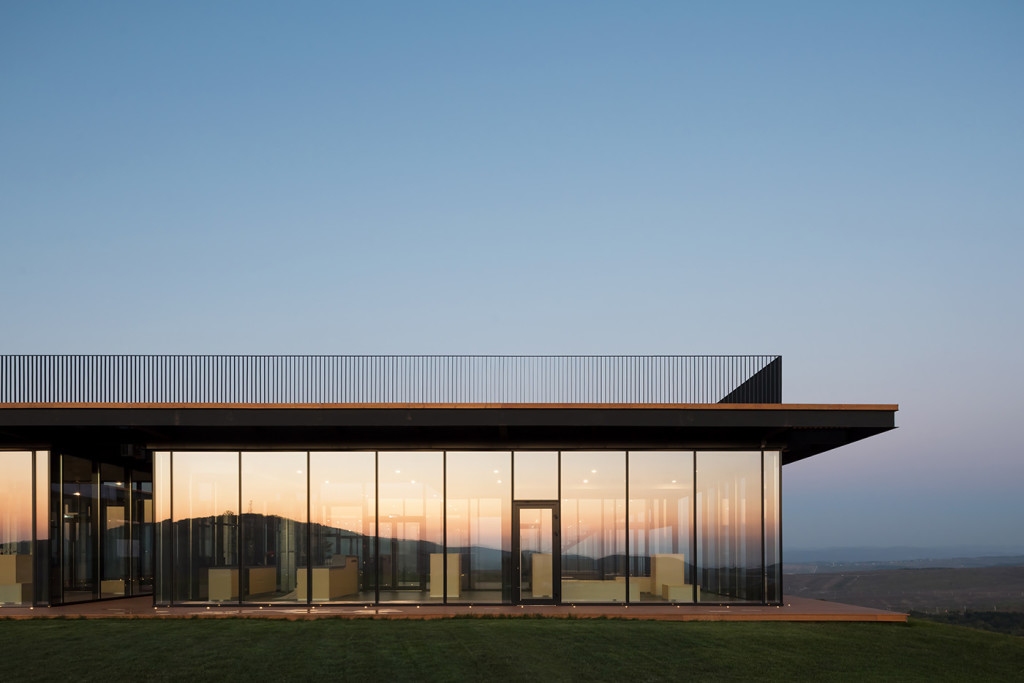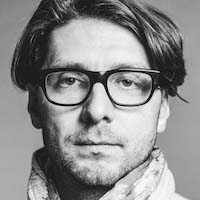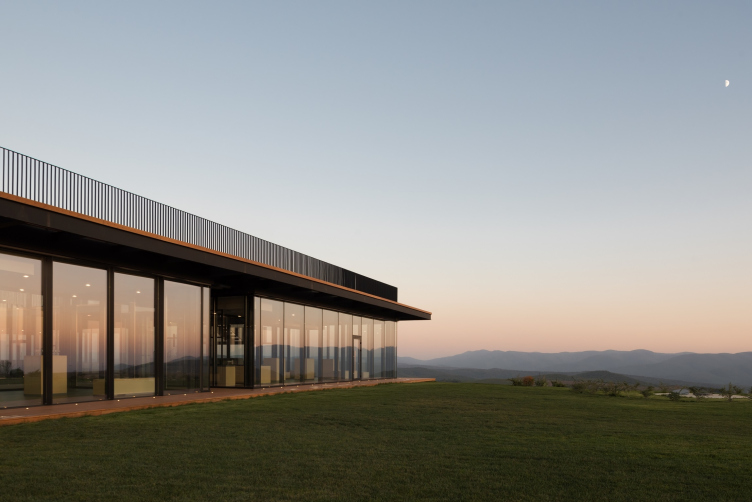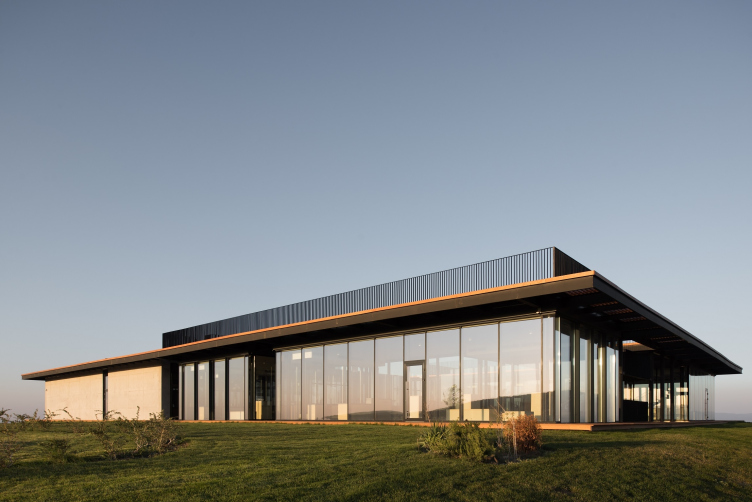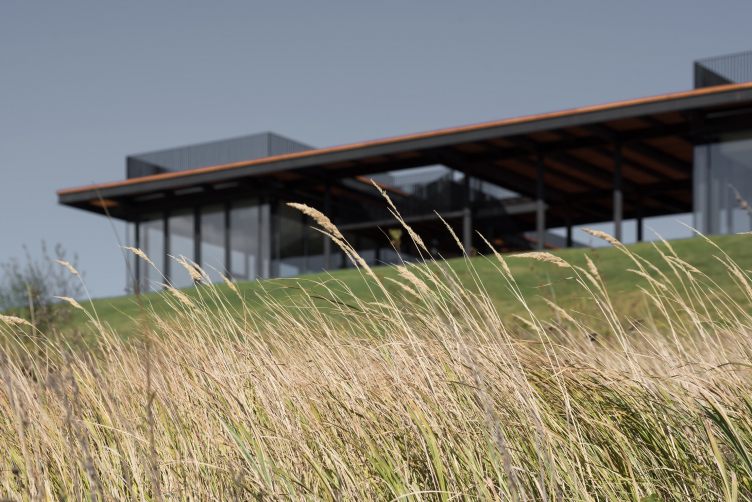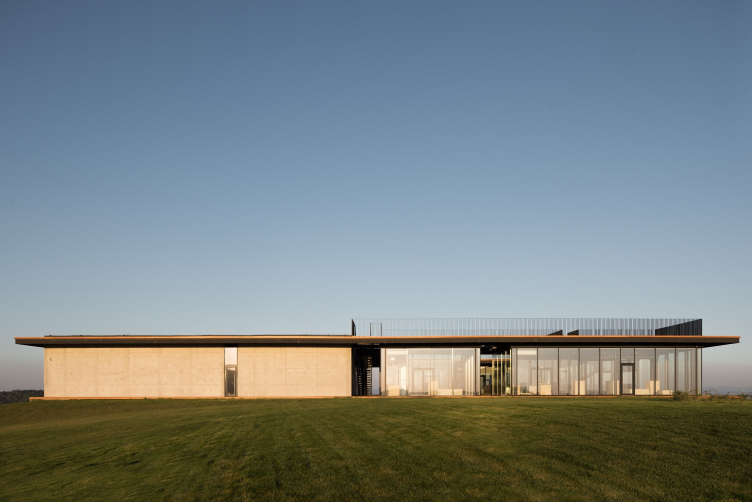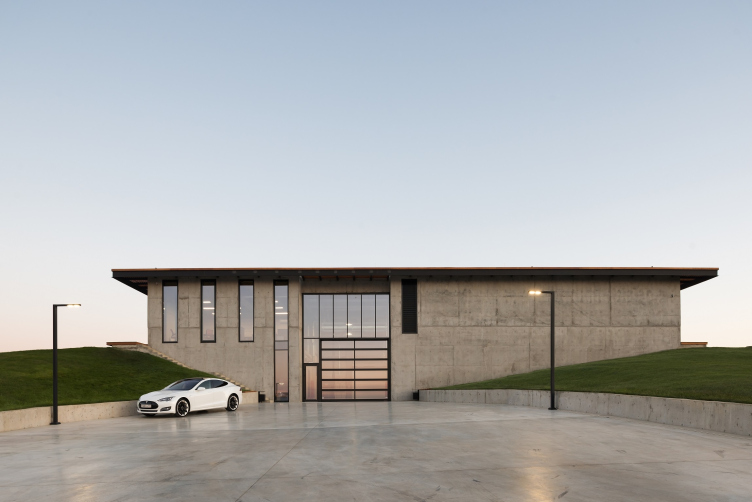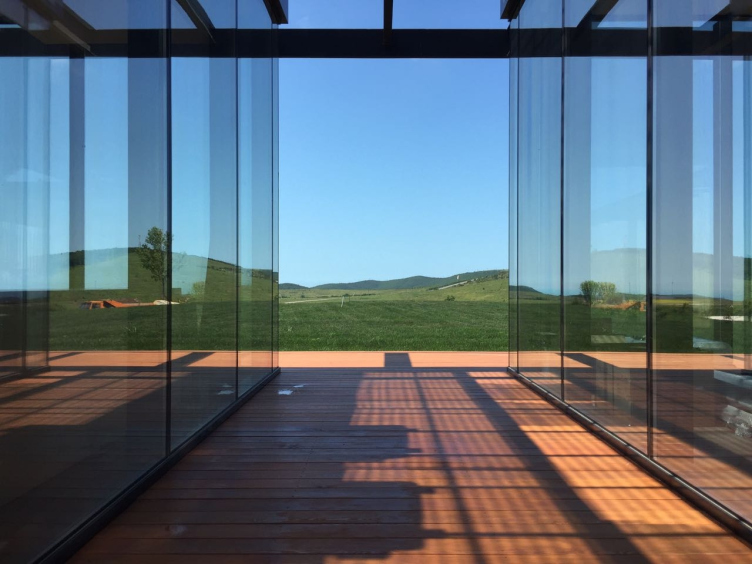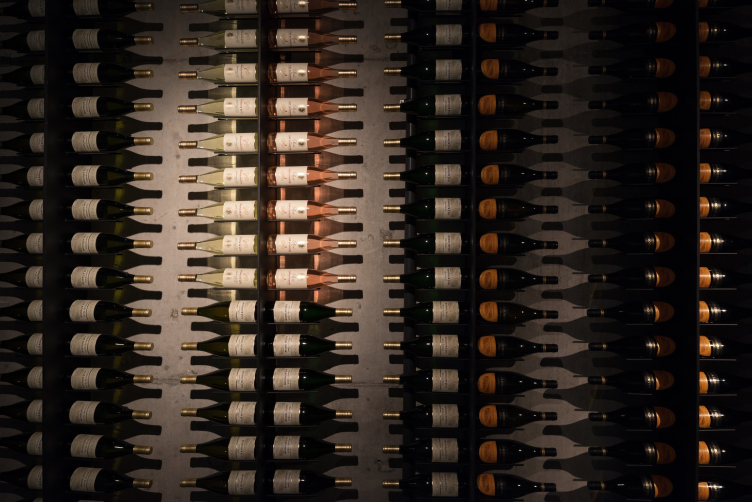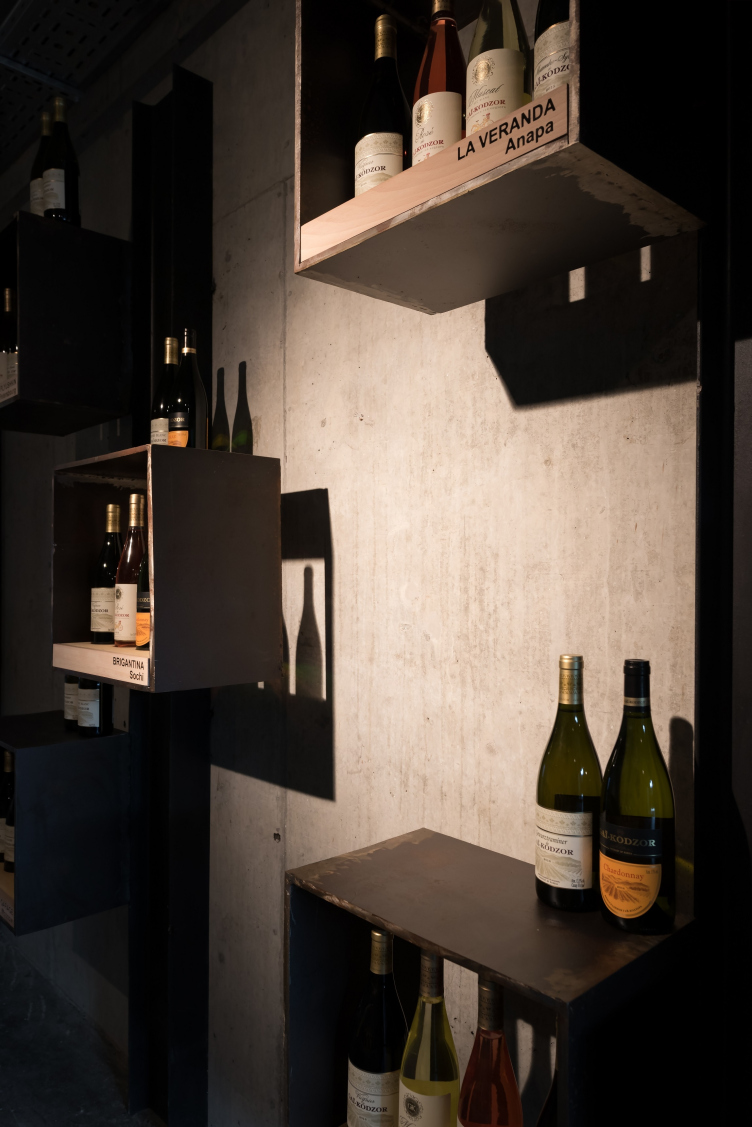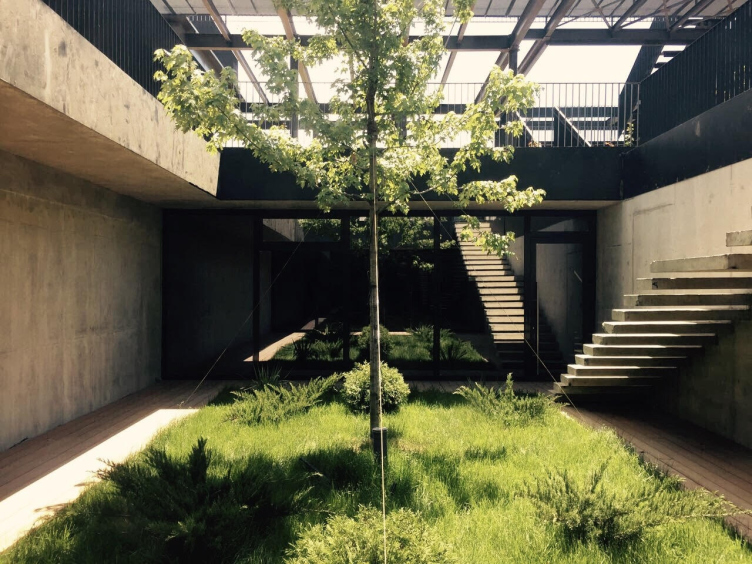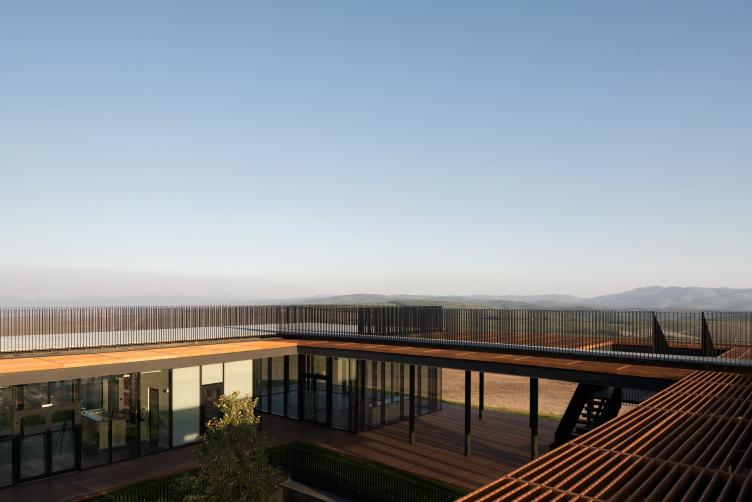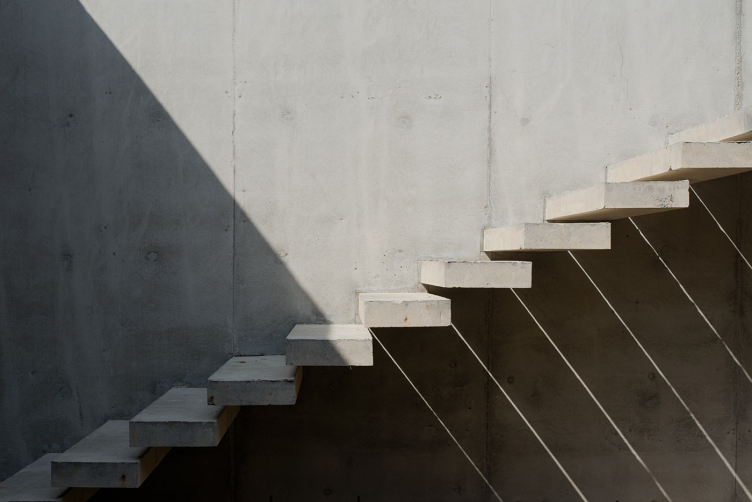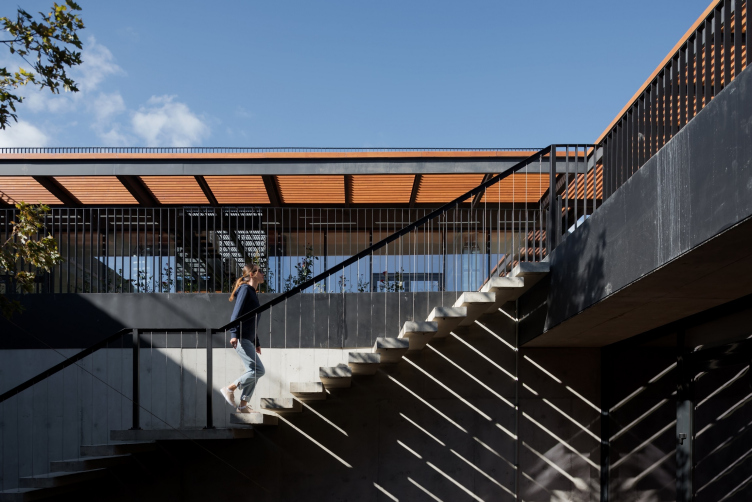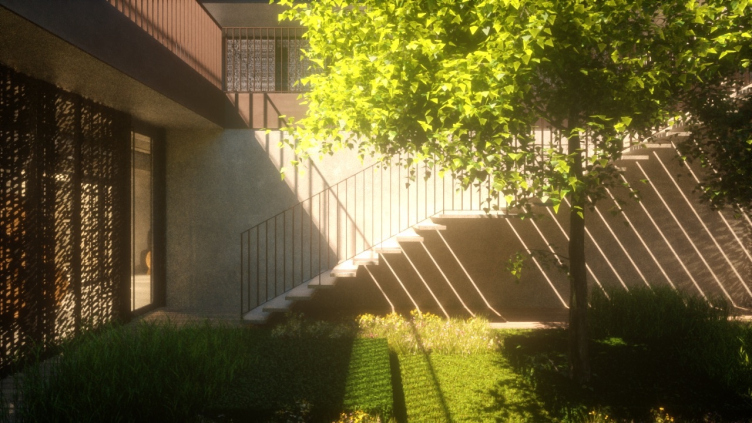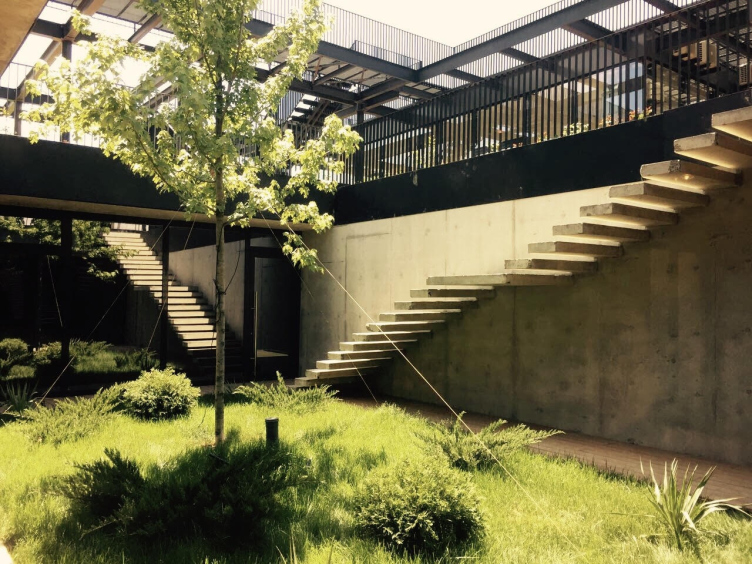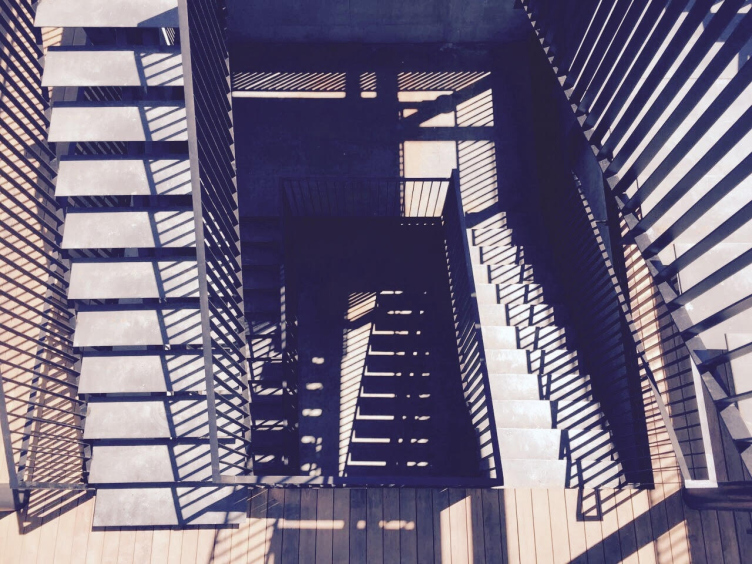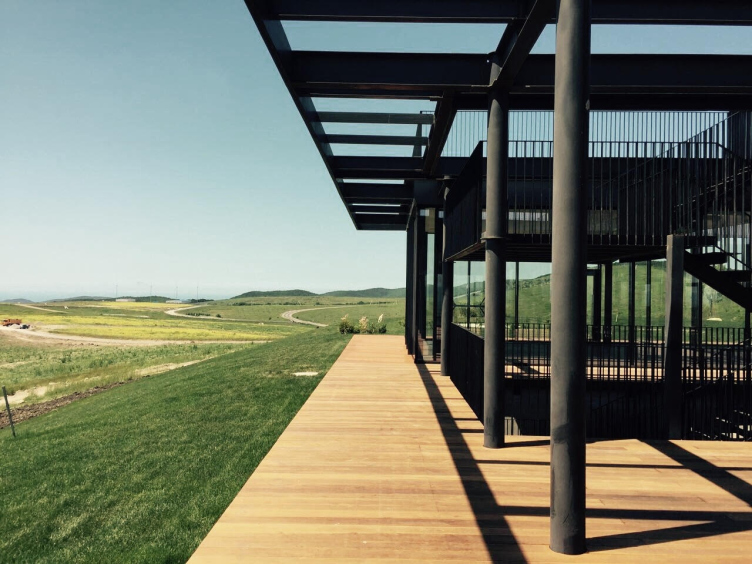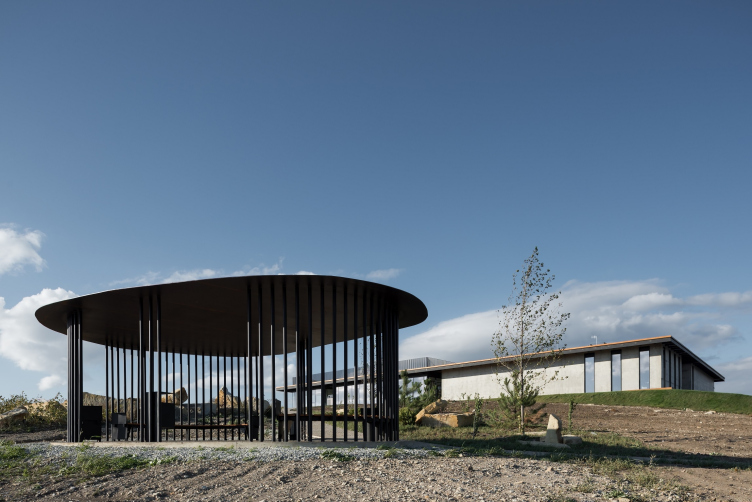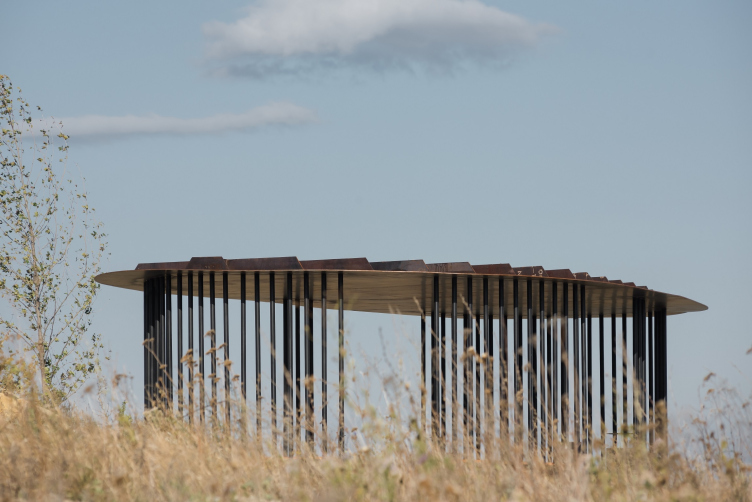Over the last few decades, the architecture of wineries established itself as a typology in its own right, with certain norms and requirements of its own. Their design became the hot trend of today, including among the star architects: the names of Frank Gehry, Santiago Calatrava , and Sir Norman Foster attract not only connoisseurs of wine but also fans of modern architecture. The new history of Russian winemaking is only just gaining momentum but even now we can safely say that their architecture has become an instrument of attracting the public interest to winemaking complexes and forming their identity. The latest vivid example of that is the winery of Haykadzor, which opened in the summer of 2017, designed by Kleinewelt Architekten.
Winery in Haykadzor. Realization, 2013-2017, Kleinewelt Architekten. Photograph © Ilia Ivanov
Winery in Haykadzor. Realization, 2013-2017, Kleinewelt Architekten. Photograph © Ilia Ivanov
Winery in Haykadzor. Realization, 2013-2017, Kleinewelt Architekten. Photograph © Ilia Ivanov
Situated on a hill amidst the Anapskaya Valley, the “Haykadzor” winery has been operating since 2000. Although the colony of Gorgippia, which stood in the stead of the modern Anapa in the antique times, was famous for its winemaking tradition, the winemakers of today had to turn to their French colleagues in order to find the perfect place for growing grapevine here. The masters of oenology Alain Dugas and Noel Rabot, who still act as consultants to this winemaking house, found back then the perfect terroir on the slopes of the Semisamsky Ridge not far away from the town of Haykadzor, where 14 sorts of South French grapevine were planted. The development of the Russian brand was so successful that in 2012 its founder decided to build a modern multifunctional complex that would combine production facilities, tasting rooms, and a wine museum, for which a closed-type contest was organized. The new tourist center was to be situated on a hill named “Vysokaya Gorka” (which, curiously, literally translates as “High Mountain”): a little higher than the town and a little lower than the grapevines. The bright sunshine, the air, and the landscape that back in the day determined the location of the planting became the starting point in the creation of the winning project.
The contest-winning Kleinewelt Architekten designed a project whose geometric forms would stand out against the picturesque background of the valley, becoming a landmark amidst the sloping landscape which would in no way violate the harmony of its natural surroundings. According to Nikolai Pereslegin, “this place is really beautiful, with a complex terrain, so we decided to make our project as flat as it can be”. It is planned that the volumetric centerpiece of the building will be accentuated by a sightseeing tower with a tasting room, which has not been built yet. However, even without this tower, the semitransparent volume of the winery rules the landscape.
Winery in Haykadzor. Realization, 2013-2017, Kleinewelt Architekten. Photograph © Ilia Ivanov
One of the tasks that the architects faced was the necessity of developing the routes of traffic flows inside the complex that was meant to become a major tourist attraction of Russia’s south. “Never stop surprising is one of the mottos of our project. The tasting of wine implies that all of the human senses must be engaged – and we wanted to complement the taste and aroma sensations with visual and space experiences. These are the prerequisites that determined our project – seemingly simple yet structurally sophisticated”.
The complex consists of several volumes linked by open-air passages but, thanks to a joint roof and a wooden deck, the building still looks like a single whole. At a first glance, it is perceived as a single-story building but in fact it has a basement floor which is only viewable from the parking lot.
The functional division into the production and public parts is accentuated by the employed materials – concrete and glass. In the part that is open to general public, deep porticos and open-air terraces alternate with glass volumes that host the main public spaces: tasting rooms, where each wine is assigned a place of its own, a museum of the history of winemaking, and a conference hall for lectures and seminars. Slender metallic stairways lead to an open-air roof that commands panoramic views of the surrounding area. “We carefully calculated all the vantage points lying in the guests’ route so that the visitors could enjoy not only the gastronomy but also the surrounding landscape”.
Winery in Haykadzor. Realization, 2013-2017, Kleinewelt Architekten. Photograph © Ilia Ivanov
Winery in Haykadzor. Realization, 2013-2017, Kleinewelt Architekten. Photograph © Ilia Ivanov
Winery in Haykadzor. Realization, 2013-2017, Kleinewelt Architekten. Photograph © Ilia Ivanov
A special mood is created by the coverage of the building – metallic structures with wooden lattice that stand along the building’s perimeter in a cantilevered fashion and the slender bearing columns cast shadows – this way, the sun itself “cooperates” with the architecture, highlighting the beauty of the simple lines. And, although in the original project the coverage was still more sophisticated – the latticed pattern repeated the outlines of the local flowers – the authors are still happy with the resulting effect that brings out the purity of the geometric shapes. Executed from seasoned basswood, the wooden deck imbibes the sunshine, giving coziness and warmth to everything that surrounds it. The energy of the sun fills the complex situated in one of the most picturesque places of Russia not only visually but literally as well: the roof has photovoltaic panels installed on it, which provide electricity to the winery.
Winery in Haykadzor. Realization, 2013-2017, Kleinewelt Architekten. Photograph © Ilia Ivanov
Winery in Haykadzor. Realization, 2013-2017, Kleinewelt Architekten. Photograph © Ilia Ivanov
The concrete part of the building includes production facilities and the repository. The construction of the production facility of the winery required for taking away some of the soil, which provided an opportunity to keep up a certain temperature mode, at the same time minimizing the energy losses. The façade concrete, which serves both as the bearing and the decorative material, serves as the perfect background for the glass bottles and wooden casks.
Winery in Haykadzor. Realization, 2013-2017, Kleinewelt Architekten. Photograph © Ilia Ivanov
Winery in Haykadzor. Realization, 2013-2017, Kleinewelt Architekten. Photograph © Ilia Ivanov
The center of the whole building is essentially a garden: at the level of the basement floor, there is a green yard that spreads around an oak tree that was specially brought from Germany. The beautiful space of the atrium is created thanks to the contrast between bare concrete and lush vegetation. The stairs that lead to the yard are also unusual: the concrete cantilevers look as if they were hovering in the air casting slim shadows on the surfaces of the walls. In order to keep up life in this oasis, the architects provided for four pour points.
Winery in Haykadzor. Realization, 2013-2017, Kleinewelt Architekten. Photograph © Ilia Ivanov
Winery in Haykadzor. Realization, 2013-2017, Kleinewelt Architekten. Photograph © Ilia Ivanov
Winery in Haykadzor. Realization, 2013-2017, Kleinewelt Architekten. Photograph © Ilia Ivanov
Winery in Haykadzor. Realization, 2013-2017, Kleinewelt Architekten. Photograph © Ilia Ivanov
Winery in Haykadzor. Realization, 2013-2017, Kleinewelt Architekten. Photograph © Ilia Ivanov
A winery in Haykadzor (Armenia). Project, 2013. Kleinewelt Architekten. Photo © I. Ivanov
Winery in Haykadzor. Realization, 2013-2017, Kleinewelt Architekten. Photograph © Ilia Ivanov
Winery in Haykadzor. Realization, 2013-2017, Kleinewelt Architekten. Photograph © Ilia Ivanov
Winery in Haykadzor. Realization, 2013-2017, Kleinewelt Architekten. Photograph © Ilia Ivanov
Winery in Haykadzor. Realization, 2013-2017, Kleinewelt Architekten. Photograph © Ilia Ivanov
“Considering the fact that this is one of the hottest places in Russia, we decided that the whole complex must be centered around an oasis. Lush vegetation is something that you rarely come across in these parts, and the garden accentuates the uniqueness of the building. This is a peculiar analogy of the Garden of Eden populated by rate plants that were specially chosen by our dendrologists. The whole structure and composition of the building is centered around it” – says Nikolai Pereslegin.
The exhibition and demonstration spaces were also designed by Kleinewelt Architekten: the parallelepipeds of the counters and the straight shelves in the tasting rooms continue the theme of simple shapes. The architects also provided for the elevators for people of limited mobility.
Winery in Haykadzor. Realization, 2013-2017, Kleinewelt Architekten. Photograph © Ilia Ivanov
Winery in Haykadzor. Realization, 2013-2017, Kleinewelt Architekten. Photograph © Ilia Ivanov
There are plans for expanding the center on the future by adding a hotel complex to it. Already today the visitors are met by an entrance group designed by Kleinewelt Architekten in the same style as the main building of the complex and a small pavilion that overlooking the valley.

